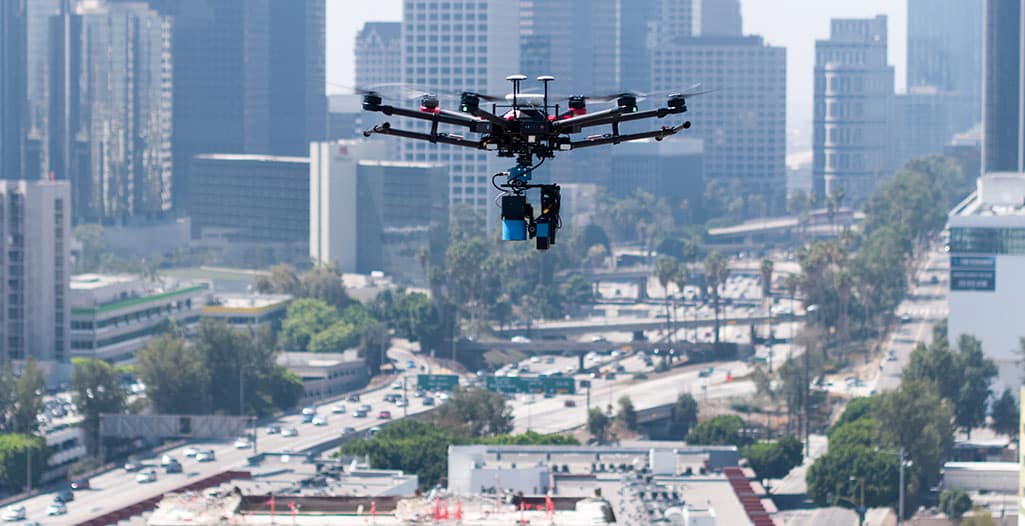Night Flights, Remote ID and Other Crucial UAS Rule Changes in the U.S.
Over the last two years, several new rules for commercial operations have been introduced by the Federal Aviation Administration (FAA) as part of the long-term aim of integrating drones into the National Airspace System (NAS).
The changes center around the authorization of some limited small Unmanned Aircraft System (sUAS) flights over people and at night without a waiver and the introduction of remote identification (remote ID). These changes are all based on Part 107 and do not amend any other operating requirements.

Flights Over People
While the opportunity to fly over people is one of the things that many in the industry see as unlocking a broader range of utility, it is important to note that what has been granted in the rule change is very restrictive. In reality, it doesn’t provide a significant opportunity for additional flight profiles. Any drone that does not conform with one of the categories discussed here is still not allowed to perform any type of flight over people, even in transit.
The rule for flights over people divides drones into four categories.
The most permissive, category 1, permits UAS with a total weight of 0.55 lbs. or less with no exposed rotating parts that could lacerate human skin to operate over people. The requirements for sustained flight over open-air assemblies under category 1 are expanded further by requiring the operation to be compliant with the remote ID rule, more on which later.
There are some drone systems that would fall below the category 1 weight limit, but the question of their ability to lacerate human skin is neither clearly defined by the FAA nor addressed by most manufacturers. While the weight alone might make the drone compliant, it is up to the operator to demonstrate full compliance.
Categories 2 and 3 are performance-based, where the operator, or the OEM on their behalf, represents to the FAA that the drone can operate safely over people. As of January 2023, only one manufacturer, AgEagle, has obtained blanket approval under category 3 for certain models of their eBee, a lightweight, fixed-wing aircraft.
Categories 2 and 3 differ in two respects. Category 3 deals with heavier drones that can produce up to 25 foot-pounds of kinetic energy and, additionally, may never operate over open-air assemblies.
Category 4 goes further still, requiring a Part 21 Airworthiness Certificate and a documented system for maintenance and inspection. This rule is designed mainly for large-scale enterprise drones.
Night Flights
Another change introduced in 2021 allows Part 107 certified operators to fly at night without a waiver. To comply with the rule, operators must complete FAA recurrent training, which includes specific modules on night flying. Additionally, the drones are required to be fitted with anti-collision lighting that is visible for at least 3 statute miles. The light must have a flash rate sufficient to provide collision avoidance and be mounted on the top of the aircraft so that it can be seen from above.
Remote Identification
Perhaps the most controversial piece of regulation introduced in the last few years relates to drone identification. Simply put, remote ID gives the drone in flight the ability to broadcast location information that can be viewed by other parties. This information will include a unique identifier and the drone takeoff location, allowing law enforcement to ascertain key data about, for example, a drone operating in an unsafe manner.
In addition to providing a layer of accountability today, remote ID is seen as another foundation of safety as more complex drone operations are contemplated.
There are three ways operators can comply with the new rule.
The first is to operate a drone that has remote ID built in. This was required of all new drones sold after September 2022. The second route is to use a drone with an aftermarket module attached. All drones operated after September 16th, 2023, will be required to be remote ID capable, so operators must stay tuned for available software updates that would create compliance or plan to add a module to their drones.
Lastly, drones can be operated without remote ID capability at an FAA-Recognized Identification Area (FRIA). These are typically remote-controlled flying fields and schools.
It is worth noting that this rule applies to private drones as well as commercial ones. However, hobbyists are only required to register once for all their aircraft while commercial drones must be registered separately.
Moving the Needle
These rule changes help establish the criteria for more extensive drone operations. While many operators want to see broad expansion of the rules, the FAA has continued to take a cautious, risk-based approach to writing regulations.
Small commercial drones have become safer and easier to fly. This, combined with the drone community’s ability to self-govern and fly responsibly, will help create the environment for a broader range of flight profiles.




